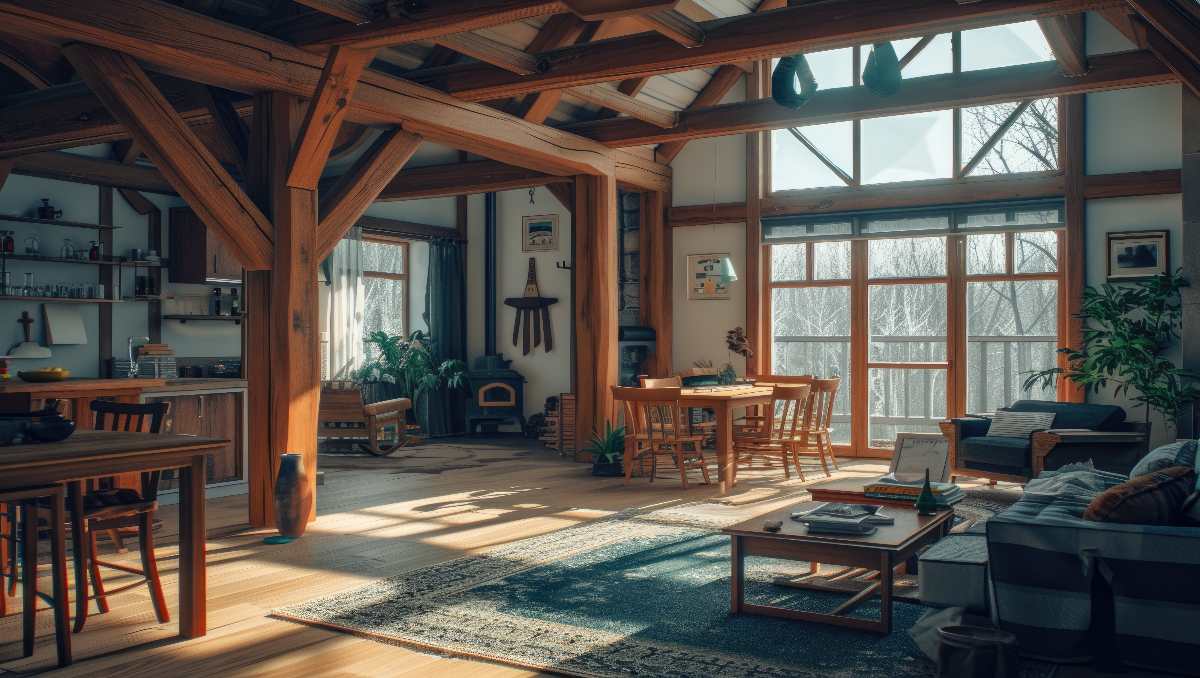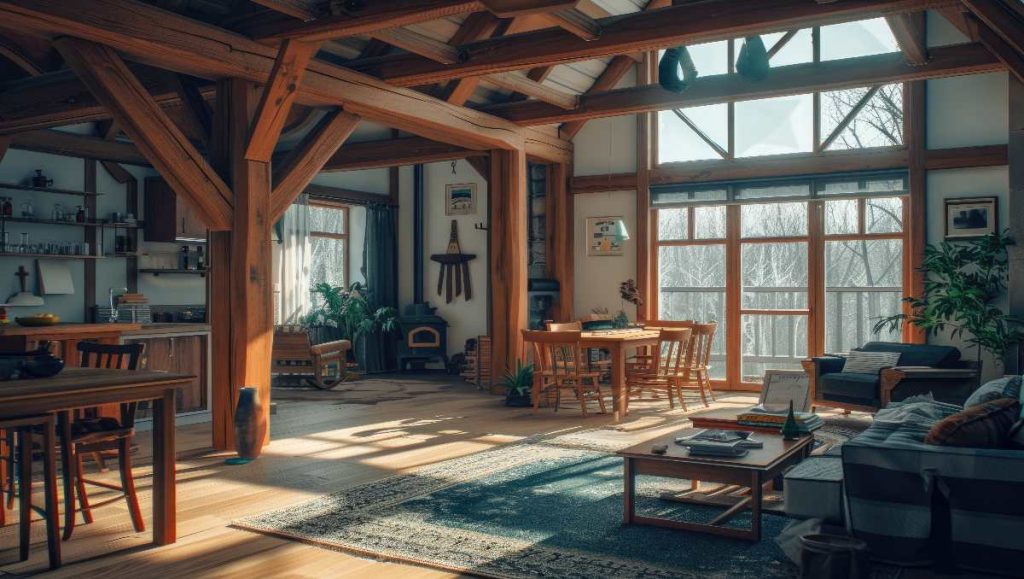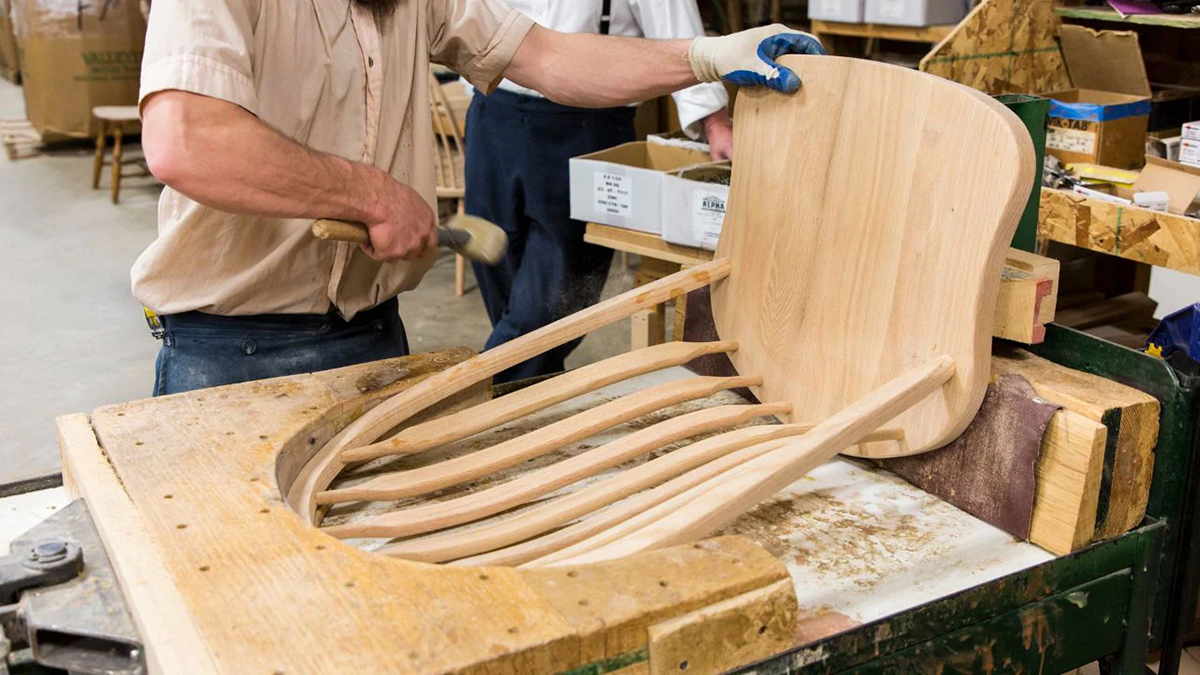Mission-style interior design, a timeless blend of simplicity, functionality, and enduring charm, is a design choice that stands the test of time. Originating from the Arts and Crafts movement, this style focuses on clean lines, solid colors, and natural materials. Amish handcrafted furniture, known for its robust handiwork and elegant design, is an ideal match for the minimalist appeal of Mission-style homes. Together, they create inviting, harmonious living spaces that stand the test of time.
Key Takeaways:
- Amish handcrafted furniture aligns perfectly with Mission-style homes due to its focus on simplicity, craftsmanship, and durability.
- Incorporating clean lines, earthy tones, and natural materials into your design creates a cohesive and welcoming Mission-style living space.
- Key pieces, such as Mission-style dining tables and chairs with exposed joinery, emphasize functionality and the natural beauty of the wood, enhancing the overall aesthetic.
This article takes a look at how to bring Mission-style design to life by incorporating essential elements and the quality craftsmanship of Amish furniture.
Understanding Mission-Style Interior Design
Mission style emerged in the late 19th century in the U.S., drawing inspiration from the simplicity of Spanish missions established in California during the 18th and 19th centuries. The term “Mission” reflects the straightforward architecture of these missions, which emphasized functionality and craftsmanship. This design aesthetic features clean lines and minimal ornamentation, with furniture crafted from sturdy woods like quarter-sawn oak that often showcases exposed joinery, highlighting the beauty of the materials.
With its earthy tones and simple color palettes, Mission-style interiors create warm, inviting spaces free from unnecessary embellishments. As noted by Forbes, the modern appreciation for minimalism—recognized for its positive effects on mental health—makes Mission style particularly relevant today. Many people now seek homes that blend functionality with tranquility, aligning perfectly with the enduring principles of this design.
Here’s a simple comparison between Mission style and Victorian and Craftsman styles to show the unique benefits of Mission-style design:
Why Choose Amish Handcrafted Furniture for Mission Style Homes
Amish handcrafted furniture perfectly matches Mission-style interiors due to its focus on craftsmanship, simplicity, and durability. Let’s explore how the quality and design of Amish pieces align with the core values of Mission style, making them an ideal choice for any home seeking timeless, functional elegance.
Overview of Amish Craftsmanship
Amish furniture is renowned for using traditional woodworking techniques, which have been passed down through generations. Each piece is crafted with attention to detail, using high-quality materials like solid wood to ensure durability and longevity. This results in timeless pieces that are built to last.
Discover the elegance and timeless design of Amish Mission Furniture, where every piece is crafted with care and precision.
How Amish Furniture Complements Mission Style
Amish Mission-style furniture embodies the core values of simplicity, functionality, and craftsmanship that define the Mission aesthetic. Amish-made dining tables and chairs use solid hardwoods like oak and cherry, enhancing the natural beauty and elegance of each piece while aligning with the Mission style’s emphasis on quality materials.
Mission-style dining tables feature clean lines and exposed joinery, showcasing craftsmanship and adding visual interest. These durable designs are practical for everyday use. Similarly, Amish-crafted chairs emphasize comfort and structure with vertical slats and flat arms, seamlessly fitting into the Mission aesthetic. Their ergonomic designs blend form and function, offering timeless comfort for modern living.
Practical Tips for Creating a Mission-Style Home with Amish Furniture
Designing a Mission-style home requires carefully selecting furniture and design elements that reflect simplicity and craftsmanship. Here are some practical tips to help you bring this aesthetic to life with Amish handcrafted pieces.
Choosing the Right Furniture
When designing a Mission-style home, focus on furniture that highlights clean lines and solid construction. Key pieces like armchairs, dining tables, and built-in furniture should emphasize simplicity and functionality.
For a cohesive living space, consider items from Amish Furniture Factory’s Mission Living Room Furniture collection, which embody the style’s core values of robust craftsmanship and timeless appeal. These furniture designs act as the foundation for creating a well-structured and harmonious home.
Below are examples of Amish furniture that seamlessly align with the principles of Mission-style homes, showcasing clean lines, natural wood, and practical functionality.
Integrating Design Elements
Earthy tones, natural light, and simple color palettes are essential to a Mission-style home. Soft browns, beiges, and natural wood grain enhance the space’s warmth and simplicity.
Studies on color psychology show how these tones can influence mood, creating a calming and welcoming atmosphere. Let natural light flood the room to highlight your Amish furniture’s textures and subtle details.
Decorative Accents
Enhance the aesthetic with Mission-style lamps, geometric patterns, and other decorative elements. These small details, such as glass shades and patterned rugs, can bring the design together.
Mission-style lamps, for example, add warmth while maintaining the space’s simple, clean look, focusing on the furniture’s craftsmanship and beauty. Vases with earthy tones or geometric patterns can also serve as subtle yet effective accents, complementing the overall Mission-style decor.
You might be interested to learn about classic chairs like the Morris chair.
Conclusion
Incorporating Amish handcrafted furniture into your Mission-style home creates a space that reflects timeless beauty, functionality, and simplicity. The focus on clean lines, natural materials, and craftsmanship ensures that both styles complement each other perfectly, delivering a cohesive and inviting living environment.
You’re investing in lasting quality by choosing Amish Furniture Factory’s pieces. These timeless pieces, such as our Mission Living Room Furniture Collection, blend traditional design principles with the elegance of Mission style, creating a home that balances durability and aesthetic appeal, making your living space both practical and beautiful.
Frequently Asked Questions
What is Mission-Style Interior Design Architecture?
Mission-style interior design architecture originated in the late 19th century, inspired by Spanish missions. It emphasizes simplicity, clean lines, and natural materials like stucco, wood, and clay tile. This style is known for its arched doorways, low-pitched roofs, and open, airy spaces that create a warm, inviting atmosphere.
What are some famous Mission-style buildings?
Famous Mission-style buildings include the Mission San Juan Capistrano in California, known for its iconic bell wall and arched corridors, and Mission San Carlos Borromeo in Carmel, which showcases classic adobe construction. Another notable structure is the Gamble House in Pasadena, a prime example of Mission Revival architecture blending Arts and Crafts influences with Mission-style features.
How to make mission-style furniture look modern?
To modernize Mission furniture, pair it with sleek, minimalist decor. Opt for neutral or bold accent colors, such as black or navy, to contrast the natural wood tones. Incorporating contemporary lighting, geometric rugs, and modern artwork can create a fresh look.
What is the difference between mission style and Craftsman style?
Mission style emphasizes simplicity and clean lines, with minimal ornamentation and dark wood. Craftsman style, while emphasizing craftsmanship, includes more decorative details, built-in features, and intricate woodwork.




